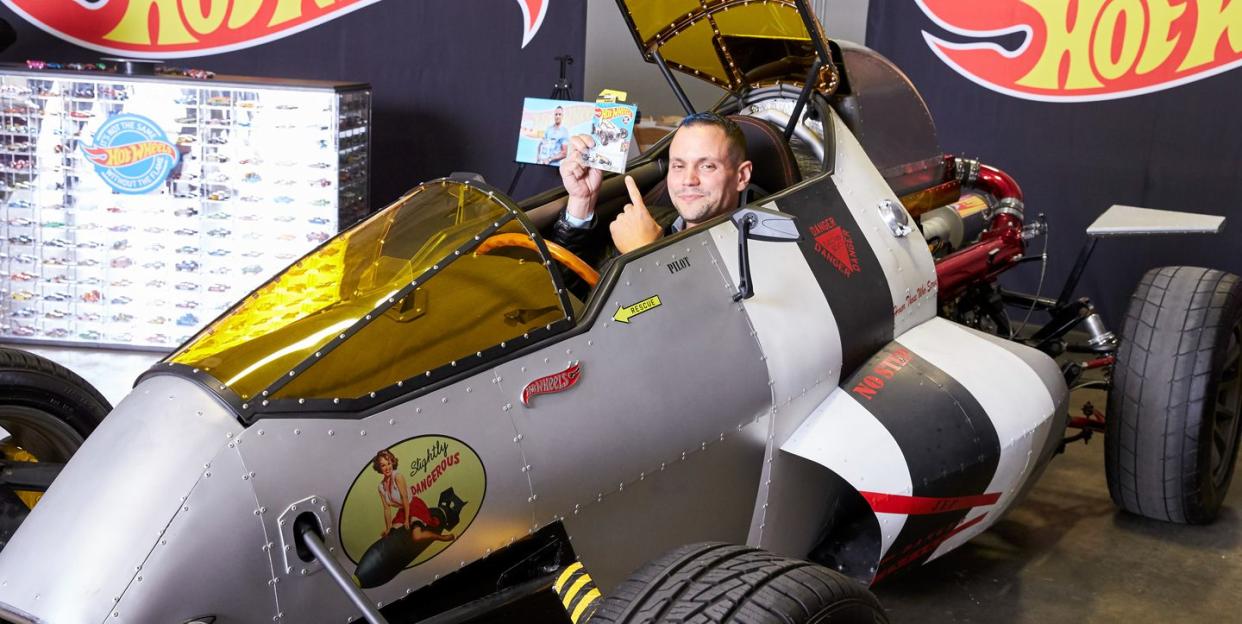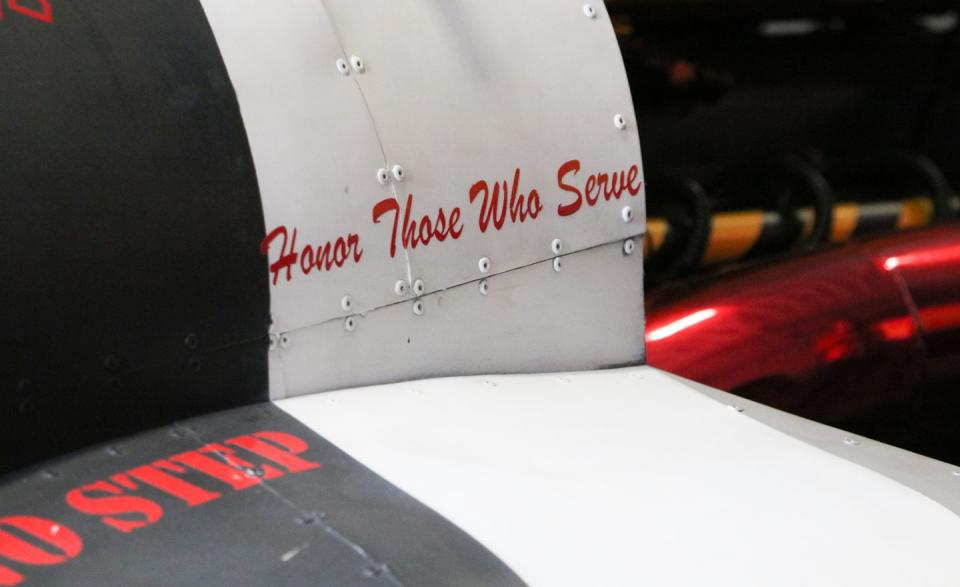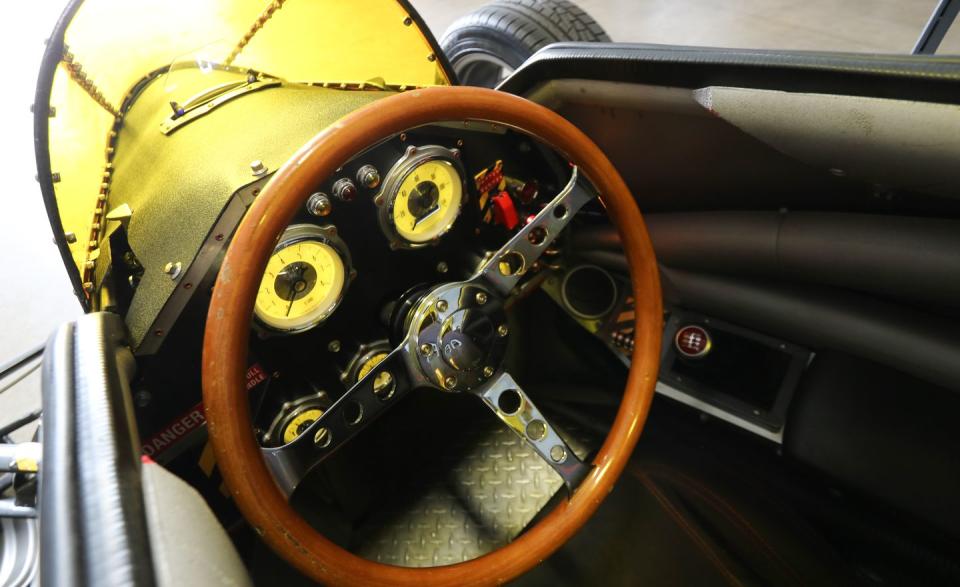Inspired by a Fighter Jet, the 2JetZ is Both a Car and the Latest Hot Wheels Model

If you're a Hot Wheels collector, you may have heard that in celebration of the brand's 50th anniversary, a team of Hot Wheels designers and executives toured 15 North American cities, beckoning fans to submit their home-built rides for consideration to become the first ever 1:64-scale Hot Wheels toy based on a real custom build. Some 3600 cars were entered, and each city's best was brought to Las Vegas during last fall's SEMA show, where a celebrity panel of judges worked with company designers to choose a winner, the 2JetZ out of New Jersey. This is the story of the incredible shrinking jet car, 2JetZ.
Built, Not Bought
2JetZ (pronounced "Two Jet Zee") was built by Luis Rodriguez to resemble a single-seat jet fighter, as if fighter-jet development included a tadpole stage in which its fuselage sprouts wheels before fully developed wings grow in. The 2JetZ embodied the three chief attributes Hot Wheels sought: authenticity-"Does it looks like a Hot Wheels car?"; creativity-"Is the person who's building the car creating something we've never seen before?"; and garage-built origins.
"That [some of] these guys are building the cars from scratch, putting their personality in the car, is a huge deal for us," said Ted Wu, head of design for Hot Wheels. In other words, they were looking for something "built, not bought."

An experienced car builder before starting the 2JetZ, Rodriguez says he didn't want to build a hot rod from an existing car. The idea of Bonneville Salt Flats racers from the 1950s and 1960s came to mind, and upon perusing some conceptual art-a common source of inspiration in the past, said Rodriguez-a rendering that depicted a vehicle with a fighter-jet-like cabin, a massive, fully exposed engine, and four open wheels poking out from the corners "hit all the right points." So, after contacting the artist for permission to build it, that's exactly what he did.
Vintage Style
The structural foundation and the "Z" in "2JetZ" both come from a Nissan 300ZX, and Rodriguez had to construct another frame on top of that one as an anchor for the fuselage. The body panels use aircraft-grade aluminum that Rodriguez pounded into proper form after learning to use an English wheel. Some 3000 aircraft rivets were used during its assembly. Forward illumination comes from two small square LED lights tucked into the nose, while the LED taillamps reside on the rear edge of tiny winglets that look like rear fenders in their infancy. Small "Pilot" and "Copilot" graphics by the canopy (even though there's only one seat) as well as the "Slightly Dangerous" bomber girl pinup graphics by the front wheels further bolster a visual connection to military vehicles of yore. Rodriguez decided to make the vehicle a tribute to U.S. armed service members, a decision that prompted him to add one final decal to each side that simply says, "To Honor Those Who Serve."

Frankenmotor and the Slightly Dangerous Vegetable Steamer
About that engine-a good old-fashioned Frankenmotor if we ever saw one-it's an iron-block turbocharged inline-six from a 1994 Toyota Supra tweaked to produce about 600 horsepower, Rodriguez claims, with cooling provided by two small Honda Civic radiators. A six-speed manual transmission from a 2010 Subaru WRX is tasked with shifting. The most curious component of the engine, however-of the whole car, really-is at the very back.
In keeping with his jet fighter theme, Rodriguez wanted an afterburner-like exhaust system, which he achieved visually using, of all things, a metal kitchen colander that might otherwise be used to steam peas. He also achieved the afterburner effect literally-not only does the colander expand and contract with the exhaust flow, but what passes forth from the engine does so with great force. After we insisted that we needed to see how the cute little kitchen appliance works, Rodriguez beckoned us to move back several feet and revved the engine to the sky, sending fire blasting from the pulsating colander amid a deafening blare and blowing down the Hot Wheels–branded room dividers placed several feet behind the car as a backdrop for its debut. Sadly, the die-cast version will offer neither a flame thrower nor a pulsating colander.

Driver AirDrops Inside
Rodriguez raised the canopy and allowed those of us feeling particularly limber to hop inside-no easy feat considering the steering wheel must be removed, and all limbs and body parts must somehow be dropped in from above through a slot that's maybe 14 or 15 inches wide and waist high off the ground. Your reasonably athletic author of average height made it in after two ungraceful attempts, requiring guidance from Rodriguez regarding which suspension arm is also a step, and where on the vehicle's body one should brace oneself when swinging a leg-the first leg being the hardest-into the cockpit with hopes that one's toes can find something to step on inside.

The good news? If your posterior can fit between the narrow walls, you'll fit in the racing seat beneath it. Once strapped in, the bodywork may seem close to your neck, but there's sufficient wiggle room to operate the stubby manual shifter to your right.
Ingress/egress issues aside, it's a lovely place to be. Rodriguez' stylistic choices of yellow instrument dials and a classic wood steering wheel deserve praise-there's even a digital head-up display, as in real fighter jets! I imagine the yellow canopy might grow tiresome after a spell, but such is the sacrifice one must be willing to live with when turning conceptual art into 1650 pounds of actual art. Rolling art, no less, with an indicated 2667 miles on the odometer.

So the 2JetZ is a really cool car. Turns out it reads really well at 1/64 scale, too-which we all finally got to see at the end of the daylong event, during which we were shown many of the steps involved with bringing a new Hot Wheels toy to fruition. We saw early prototype versions of the 2JetZ that had been 3D printed as a single form as well as in separate, layered pieces for assembly using different materials and with livery and graphic "tampo" prints.
At the end of the day, Rodriguez was presented with a metal-bodied, fully functional, hand-painted Hot Wheels version of his creation, identical to the thousands of 2JetZ toys that will be "on the pegs" in stores this November. If that's not a moment to savor, we don't know what is. And if you're one of the 3599 folks who weren't lucky enough to enter 2JetZ in the Hot Wheels First Legends Tour, the second Legends Tour just began May 18 with a large kickoff event at Hot Wheels headquarters in El Segundo, California.
('You Might Also Like',)

